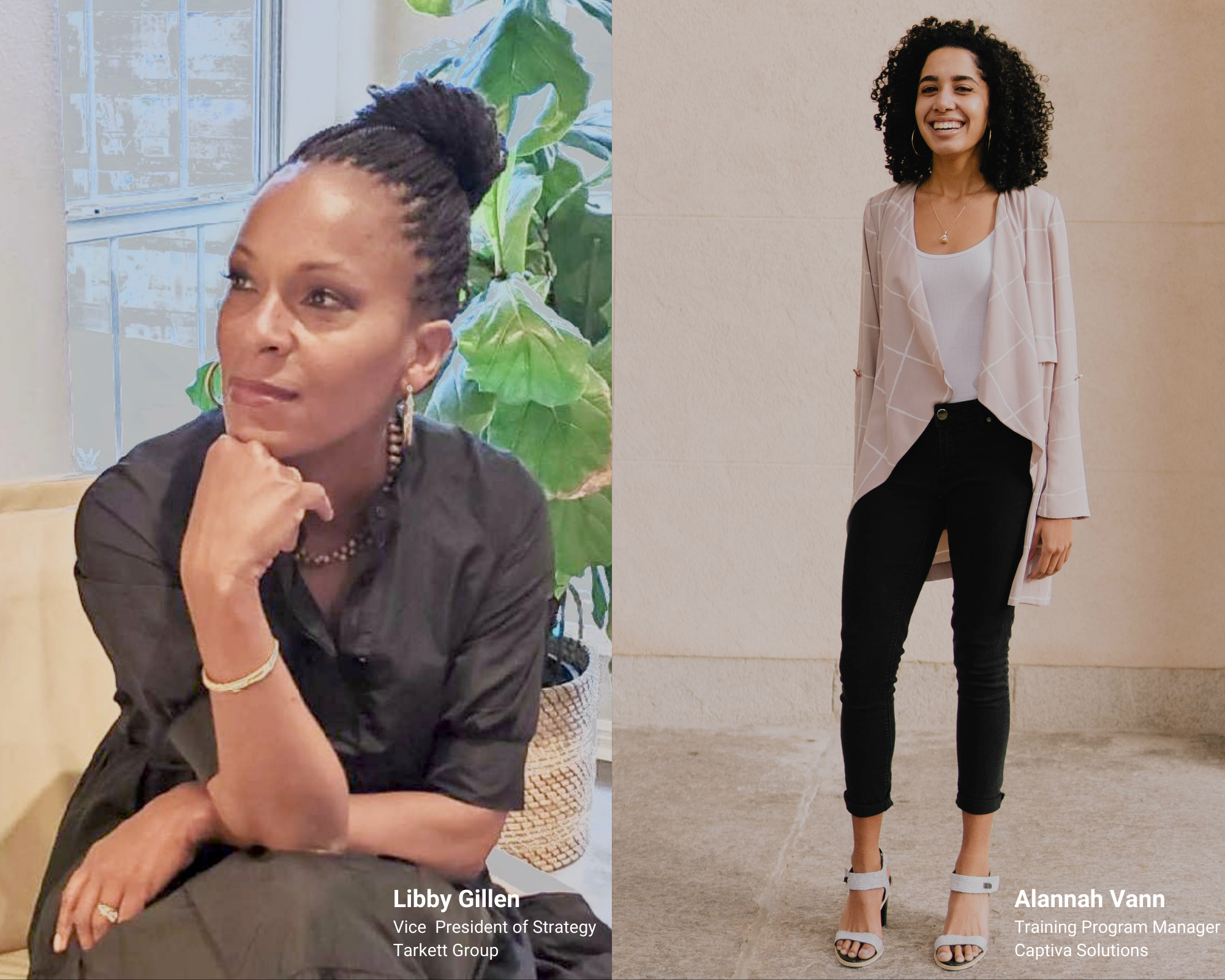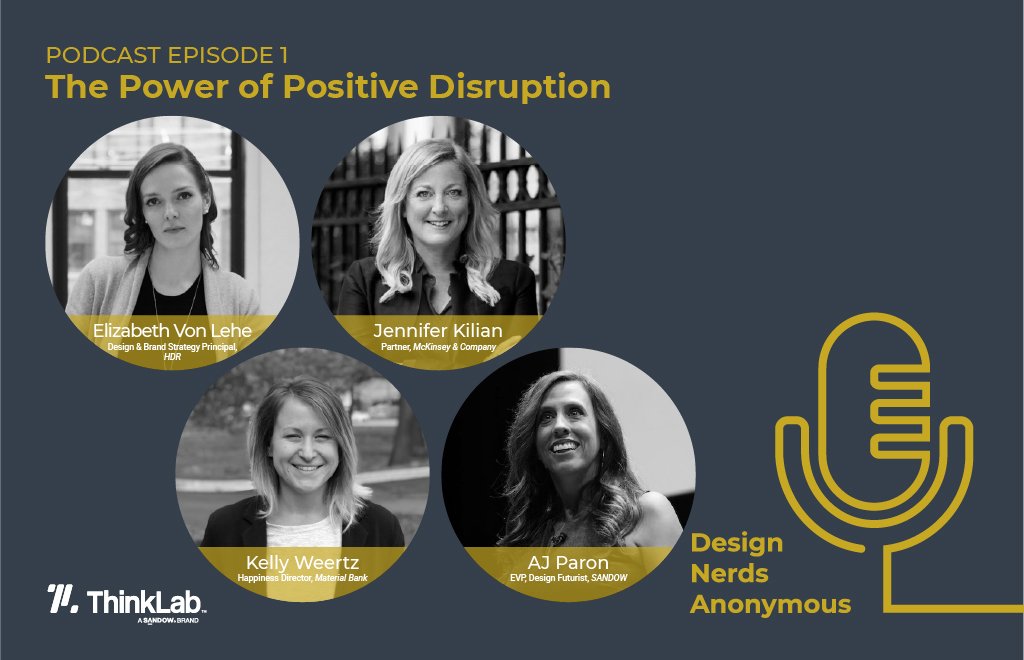
The average work week is typically 40 hours. But the reality is that full-time employees can spend many more hours engaging with work-related tasks and struggling with remote work challenges. One top of that, feeling isolated in the workplace is often a greater burden for African American employees in particular.
So what happens to morale, retention, and career development when you don’t have a sense of belonging in an environment that demands so much of your time?
We first explored this question of belonging in Episode 6 and Episode 7 of our podcast, Design Nerds Anonymous. We spoke with Libby Gillen, Vice President of Strategy at Tarkett Group, and Alannah Vann, now Training Program Manager at Captiva Solutions.
They both shared their personal perspectives about workplace concerns as Black women. Gillen recounted a story of having to be extra mindful while traveling through rural Alabama. Driving from appointment to appointment is such a regular requirement, but also one that quietly separates those who have to consider their safety due to their skin color from those who do not. She wondered if her white, male counterparts ever have the same anxieties. Vann echoed the sentiment of struggling with loneliness during her time at design school where it was not always easy to relate culturally.
Research has shown that this experience is far from uncommon for Black employees. A 2020 Cigna study on loneliness in the workplace surveyed close to 100,00 adults and found levels of loneliness rising in the U.S. and that “people who are lonely are less engaged at work.”
Along with generational, gender, and workstyle differences, the report also studied different ethnic groups. In particular, it found that 30 percent of African American workers felt “abandoned by coworkers when under pressure at work,” compared with 25 percent of white workers. They also reported feeling “more alienated from their coworkers” (at 30 percent, versus 26 percent of white workers), as well as more “emotionally distant at work” (at 43 percent, versus 36 percent of white workers).
Almost two years later, we continue the conversation with Gillen and Vann, diving deeper to understand the impact of mentorship, how to communicate the opportunities available, and what kinds of conversations make a real change. Together with their help, we share three ways you can foster a sense of belonging in the workplace for all.

Gillen (left) and Vann (right) met by chance a few years ago. Vann’s partner was Gillen’s family friend and neighbor at the time. Since then, their mentor/mentee relationship has provided guidance and camaraderie through many complex professional situations.
Foster inclusion through mentorship.
As described by a 2021 Forbes article, Jeanine Stewart, senior consultant with the Neuroleadership Institute, has suggested that “when we share a sense of social identity with a group, we can lean in, use our strengths, and be authentically who we are.”
Where and how we first learn to build professional habits has a huge impact on the kind of confidence that we bring to our next project and team. These formative experiences are individual and nuanced. Some have had inclusive experiences where they could see aspects of themselves reflected in their leaders and social circles. Others may have had formative experiences that were less diverse, inevitably building an identity centered on physical and cultural differences.
“I get jealous of my friends who went to historically Black colleges, because their confidence and identity was built up in that primarily Black college,” Gillen admits. “Then they went to get their education in design, so they had the confidence and resources to believe in themselves first as Black or minority, and then to prove themselves in their next level of education or next job.”
Diversity in Design, a MillerKnoll initiative, takes all this into account. Founded and supported by a collaboration of companies — ranging from Pentagram to Gap Inc. to Airbnb — DID is a space dedicated to Black and African American creatives. One of its objectives is to connect mentors to mentees and up-and-comers to internships. Gillen has started to participate in this initiative, with the goal of hosting sessions in the Tarkett Group showroom where attendees can work on practical skills, such as presenting, resume writing, and role-playing difficult conversations. More importantly, the program and all those involved recognize that a comfortable and safe environment is necessary for creatives to feel they can make mistakes and explore new territory — and, ultimately, for growth and retention.
“I think about feeling intimidated when I went through reviews, and I couldn’t tell what they — usually a panel of white judges — thought of my ideas,” Vann agrees. “It was hard to gain confidence in those situations, so I definitely think that this kind of mentorship would have been helpful.”
Communicate the full range of opportunities.
There is no shortage of talented Black and African American candidates in the workforce. According to a 2020 BLS report, 25 percent of the Black and African American community have earned a bachelor’s degree or higher. However, a 2019 report by Coqual (formerly known as The Center for Talent Innovation) found that 35 percent of white women had people in their work networks who advocated for their ideas and skills, while only 19 percent of black women did.
Vann and Gillen think that outside of pushing for greater advocacy and growth, there might be another missed opportunity: The roles in the interiors industry are much more varied than is often assumed.
As the pandemic continues to upend traditional assumptions about careers, stability, and skill sets, the interiors industry is being tasked with providing more services at a competitive pace. Interior Design Giants of Design research discovered what non-traditional roles the top 100 firms of 2022 were looking to hire this year.
The top five opportunities for non-traditional roles in design were:
- Graphics/environmental graphics
- Experience/UX designers
- Branding/marketing
- Workplace strategists
- Tech specialists
It’s not surprising that graphics- and technology-based roles top the list. With the changing demands of spaces and environments, the future of design has never been more important, and yet these new roles don’t always get the spotlight.
“I’ve rarely come across a firm or manufacturer’s social media where they’ve introduced different people or departments,” Vann says. “There’s little awareness of the opportunities available.”
Here’s a chance to highlight the new, emerging roles that are shaping the future of the interiors industry, while also building community and belonging in an authentic way. Social media awareness campaigns — like advertising mogul RG/A’s “Meet the new team” or Google’s #Nooglers hashtag (pronounced new-gler) — encourages new hires to be an equally celebrated part of their professional environment and for the outside world to humanize their experience with products and services.
Have meaningful conversations for impact.
“Employers need to start contributing to the development of diverse designers,” Gillen says.
While many firms have established advocacy groups and diversity initiatives, it must be acknowledged that not every employee feels able or comfortable to contribute. Whether there’s concern about time commitments or potential retaliation, employers can alleviate this with public support for these programs and ongoing conversations that shape how we approach belonging in the workplace.
Gillen is proud of the Employee Resource Group that she has since co-founded at Tarkett Group. This initiative encompasses people of color in all departments and has generated a real sense of safety, trust, and action. Gillen says, “There have been meaningful discussions about how to navigate uncomfortable situations around race or gender or religion. By being able to have these conversations, it’s created a comfortable zone where we can really share.”
I was curious to know what the immediate reaction was after she shared her driving story a couple of years ago: “I brought awareness,” she answered, “Because before that there weren’t a lot of people in the company who thought that way.”
With monthly meetings and guest speakers, the group is gaining traction. “Now, HR or the learning and development team will come to us with specific questions,” Gillen says. “That feels good because it’s a sign of wanting to do better and know more.”
Anna Lu is the project manager at ThinkLab, where we combine SANDOW Media’s incredible reach to the architecture and design community through brands like Interior Design Media, Metropolis, Luxe, and Material Bank with proven market research techniques to uncover relevant trends and opportunities for the design industry. Join in to explore what’s next at thinklab.design/join-in.


-1.jpg)
